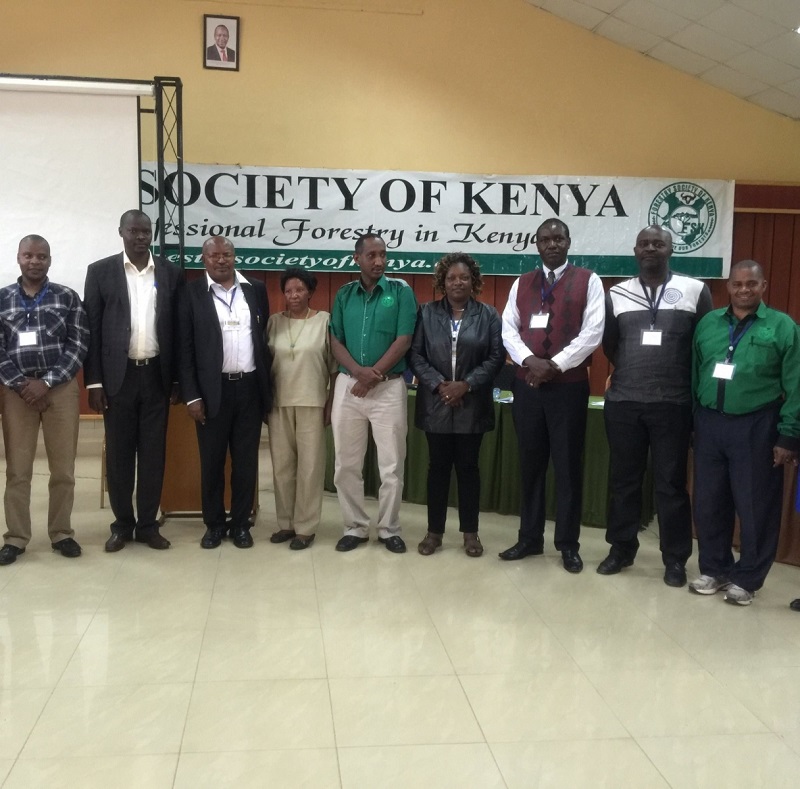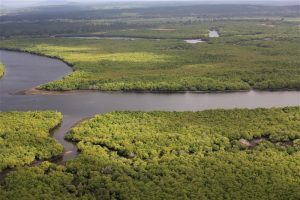By Mercy Njane
It is estimated that 420 million ha of forests have been lost globally since 1990. A forest resource assessment report by FAO further indicated that between 2015-2020, the annual deforestation rate was estimated to be 10 million hectares. Despite the role played by forests in carbon sequestration, deforestation and forest degradation lead to massive emissions of greenhouse gases into the atmosphere. This increasing rate of deforestation and forest degradation globally formed the basis of discussion during the COP26 World Leaders Summit on, ‘Action on Forests and Land Use’. The event led to alliances and commitments from various governments, private institutions and companies, and development and financial actors. During the event, various declarations, agreements, and pledges were made as highlighted below.
Reducing Forest Deforestation and Degradation
The Glasgow Leaders’ Declaration on Forests and Land Use was endorsed by 133 nations who committed to collectively halt and reverse forest loss and land degradation by 2030 while delivering sustainable development and promoting inclusive rural transformation. Kenya is among the 133 countries that endorsed the declaration. The leaders committed to conserving forest and terrestrial ecosystems and accelerating restoration; reducing vulnerability, building resilience, and enhancing rural livelihoods; reaffirm international financial commitments for various efforts including forest conservation and restoration and sustainable forest management, and also facilitate the alignment of finances with goals to reverse forest degradation and loss.
The Lowering Emissions to Accelerating Forest Finance (LEAF) Coalition mobilized 1 billion USD in 2021 for the nations committed to reducing deforestation and protecting tropical and sub-tropical forests. LEAF brings together both public and private sector entities to provide finances for the conservation and protection of tropical and sub-tropical forests. 23 jurisdictions, including Kenya, have submitted eligible proposals to LEAF.
The Multilateral Development Banks launched a joint nature statement with a commitment to mainstream nature in policies, investments, analysis and assessments, and operations in line with mandates and operating models. The 9 MDBs also committed to continuing to support public and private sector clients to participate and benefit from the global carbon markets. The banks also committed to supporting countries in the implementation of nature-based solutions and plans and strategies such as the Nationally Determined Contributions (NDCs)
Land-use change from forest lands to agricultural lands has been a major challenge in the forestry sector. As part of their commitment to addressing climate change, investors committed to eliminate agricultural commodity-driven deforestation at their respective companies and their financing activities by 2025. Additionally, the Forest, Agriculture and Commodity Trade (FACT) Statement was signed as part of a roadmap of actions to deliver sustainable trade and reduce pressure on forests.
Resource Mobilization
Donor countries have shown interest and commitment towards financing forest-related efforts in curbing climate change. At the summit, a Global Forest Finance Pledge was established set to finance the protection, restoration, and sustainable management of forests. In this pledge, 12 donor nations pledged to collectively mobilize 12 billion USD for forest-related climate finance between 2021 to 2025. Furthermore, Congo Basin Joint Donor Statement was developed with 12 countries and philanthropic donors making an initial collective pledge of at least 1.5 billion USD between 2021 and 2025 to protect the Congo Basin Forest, the second-largest tropical rainforest globally.
The Indigenous People and Local Communities (IPLC) are some of the key stakeholders in forest conservation and management. The IPLCs provide guardianship in protecting tropical forests and preserving the vast ecosystem services. The IPLCs do not have land tenure rights and also access to the resources they have protected over the years. During the summit, 14 countries and donors pledged 1.7 billon USD from 2021- 2025 to support IPLCs through capacity building, sustainable livelihoods, financial support for group activities; and also, activities to secure, strengthen and protect IPLCs land and resource rights. Leaders also committed to promoting effective participation and inclusion of IPLCs in decision making
As nations work towards increasing tree cover and keeping global temperatures below 1.50C as per the Paris Agreement in COP21, halting deforestation should be one of the strategies used. Forests provide a wide range of services including the much-needed carbon sequestration, air purification, water catchment areas, and other ecosystem services. As Kenya targets a 10% tree cover, halting deforestation and reversing the lost forest resources is key to meeting this target. Practices such as farm forestry and farmer-managed natural regeneration (FMNR) should be adopted to not only help increase the tree cover and reduce pressure on natural forests but also improve livelihoods. There is need for a collective effort between both government and the private sector to protect, restore, conserve and manage forest resources in Kenya.





